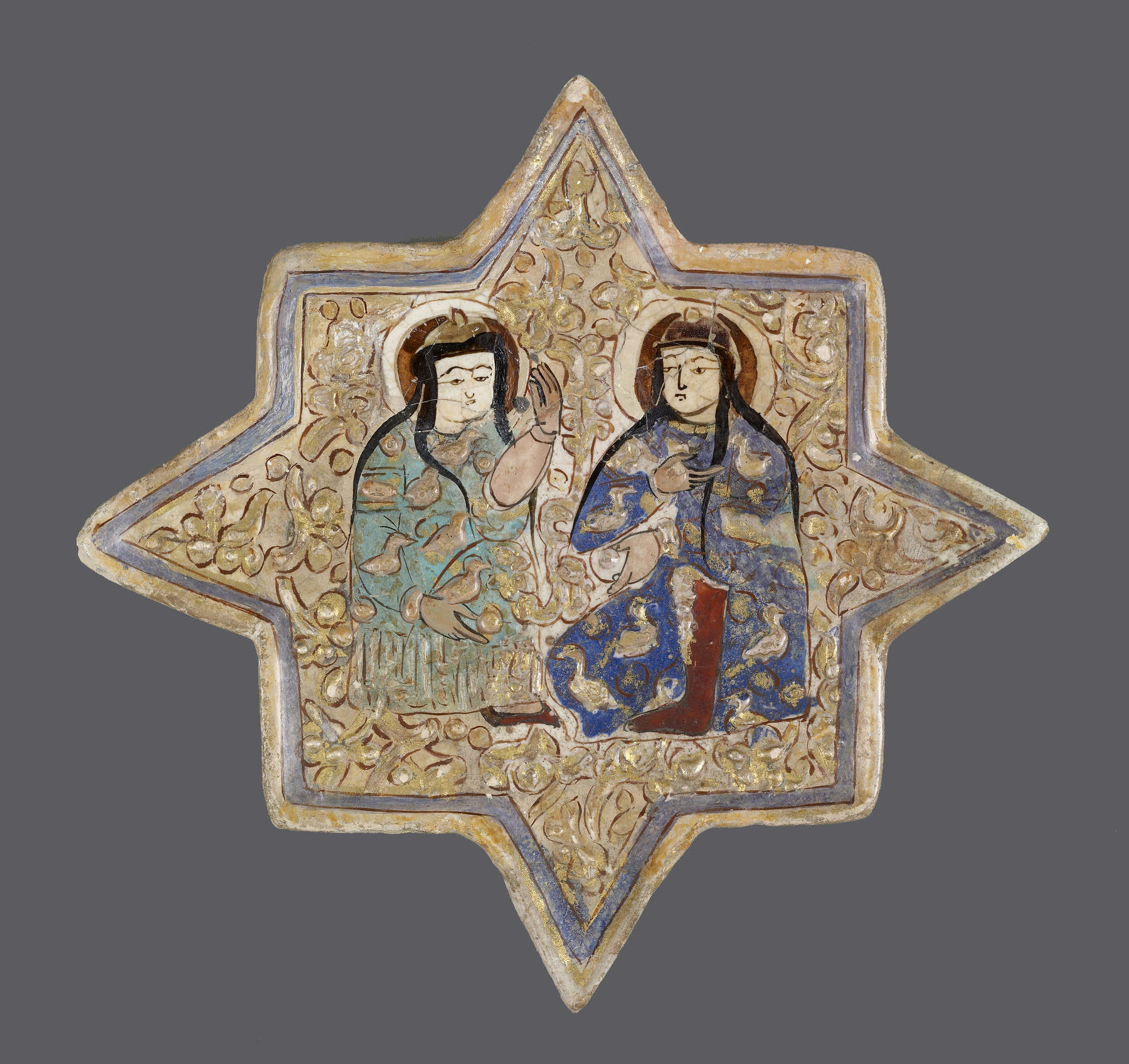Tile in the Style of Mina'i Ware
Mina’i is a modern collectors’ term for ceramics made in Iran during the late 12th to early 13th centuries. The term mina’i, translates as “enamelled” in Persian, designating the colored glass pigments used to paint detailed figural decoration on vessels or tiles, which were then fixed on the ceramic base by multiple firings. The use of a wide range of colors, including turquoise, red, green, purple, and black, also led these types of ceramics to be called by the Persian term “haft rang,” or “seven colors.”
This star-shaped tile depicts two seated figures against a stylized floral and vine background. When the supply of these wares was exceeded by the demand of 19th- and early 20th-century collectors, forgeries, like this one, were produced. Forgeries can be made of entirely new materials or can be created out of fragments from multiple authentic but broken objects. This tile is a pastiche of historic fragments, modern ceramic restorations, and plaster fills.
Provenance
Provenance (from the French provenir, 'to come from/forth') is the chronology of the ownership, custody, or location of a historical object. Learn more about provenance at the Walters.
Henry Walters, Baltimore, 1927, [mode of acquisition unknown]; Walters Art Museum, 1931, by bequest.
Conservation
| Date | Description | Narrative |
|---|---|---|
| 8/30/1963 | Examination | examined for loan |
Geographies
Iran (Place of Origin)
Measurements
H: 7 1/16 × W: 7 5/16 × D: 13/16 in. (17.9 × 18.5 × 2 cm)
Credit Line
Acquired by Henry Walters, 1927
Location in Museum
Not on view
Accession Number
In libraries, galleries, museums, and archives, an accession number is a unique identifier assigned to each object in the collection.
In libraries, galleries, museums, and archives, an accession number is a unique identifier assigned to each object in the collection.
48.1280




